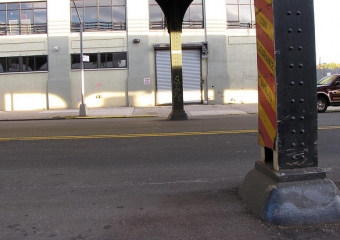

Photo by momentcaptured1 is licensed under CC BY 2.0
A growing national and international trend has landed on the shores of New York City. Watch this trend as it sweeps through major cities throughout the country in the coming months.
American cities, especially large ones, began repurposing urban areas some time ago. The results were exceptionally positive. Revitalized areas generated new tax revenue, crime rates fell and new jobs were created as retail establishments moved into upgraded space. Everything was “coming up roses,” but then the cities began running out of space to repurpose and revitalize.
That’s what ushered in the concept of reclaiming space under elevated transportation infrastructure. New York City found 700 miles of underutilized public land that could be repurposed even though it was situated beneath subways, rail lines and highways. This type of space had been neglected for decades, but that is changing quickly now.
An interesting report titled “Under the Elevated” was created through a joint effort that involved the New York Department of Transportation and the Design Trust for Public Space. The report examines various types of space located under elevated infrastructure and it offers interesting suggestions for repurposing these areas. The suggestions included ideas for all five New York boroughs…but, the advice could be used by any city.
The report points to health benefits to residents in a city when safe park areas are created. Washington Heights, along the Harlem River, repurposed a stretch of land that had become a homeless encampment and transformed it into an attractive park. A rock climbing wall and other amenities were created. Hiking trails are now being planned for the area.
The land under the Manhattan Bridge in Chinatown was dark, loud and dirty. As a result, the triangle park there was almost never used. The Design Trust added benches and a public information kiosk, with plans for a lighted pedestrian plaza and a vegetation “green” wall that will reduce noise and improve the air quality. The new and upgraded park has become a source of pride to residents and a significant asset to the area.
To curb the noise under two subway tracks in the Bronx, the Design Trust installed a lighted kiosk with benches and piped in music by Bronx-based artists. Pedestrian traffic began responding positively and the entire neighborhood developed a new sense of pride because of the improvements.
A charging station for electric taxis has been planned for an area under the Queensboro Bridge. Solar recharging areas will be enhanced with restrooms and snack stands for taxi drivers.
City leaders in New York designated seven elevated infrastructure sites for upgrades. The same types of areas exist in many cities. It will be interesting to see how quickly this type of effort is replicated. A quick look at the increase in city revenues may be the strongest influencer on city leaders.
